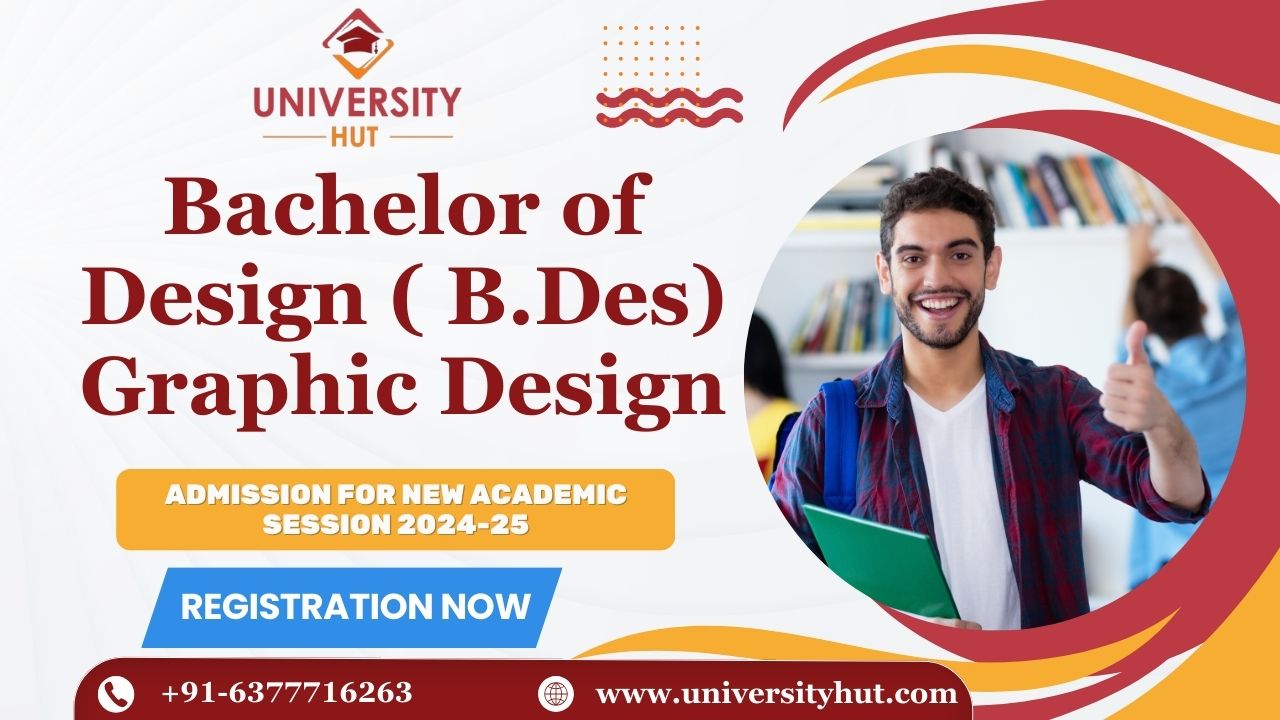Bachelor of Design (B.Des)
Introduction about Bachelor of Design
Dev Bhoomi University, Uttarakhand referred by University Enquiry offers Bachelor of Design program is a multidisciplinary course that blends theoretical knowledge with hands-on practical experience. It is structured to provide students with a comprehensive understanding of design principles, techniques, and applications in different domains. Whether it's creating visually appealing graphics, innovative products, or stylish fashion, B.Des graduates are equipped to contribute to the evolving world of design.
Key Features:
-
Multidisciplinary Approach:
-
B.Des programs often offer a multidisciplinary approach, allowing students to explore various design fields before specializing in a specific area.
-
Creative Exploration:
-
Students are encouraged to explore and develop their creative potential. The program fosters a culture of experimentation and innovation in design thinking.
-
Practical Skill Development:
-
The curriculum emphasizes hands-on learning, enabling students to acquire practical skills through design projects, workshops, and internships.
-
Industry-Relevant Curriculum:
-
B.Des programs are designed to align with industry standards, trends, and emerging technologies. This ensures that graduates are well-prepared for the dynamic demands of the design profession.
-
Specializations:
-
B.Des programs often offer specializations or concentrations in specific design areas, allowing students to focus on their areas of interest such as graphic design, product design, textile design, or interaction design.
-
Design Thinking:
-
Design thinking, problem-solving, and user-centric approaches are integral components of the B.Des curriculum. Students learn to approach challenges with a creative mindset and empathy for end-users.
-
Portfolio Development:
Throughout the program, students work on building a portfolio that showcases their best design projects. A strong portfolio is crucial for future job applications and career opportunities.
-
Collaborative Projects:
-
Collaborative projects and group work are common in B.Des programs, simulating real-world working environments where designers often collaborate with diverse teams.
-
Exposure to Industry Practices:
-
Many B.Des programs include opportunities for internships, industry visits, and interactions with professionals, providing students with exposure to real-world design practices.
-
Career Opportunities:
-
Graduates of B.Des programs can pursue diverse career paths in industries such as advertising, fashion, technology, publishing, manufacturing, and more. Job roles may include graphic designer, product designer, UX/UI designer, or fashion designer.
Conclusion:
A Bachelor of Design program is an exciting journey that nurtures the creative spirit, hones design skills, and prepares individuals for rewarding careers in the ever-evolving world of design. Whether shaping visual communication, designing innovative products, or influencing user experiences, B.Des graduates play a vital role in shaping the aesthetic and functional aspects of the world around us.
What is the Admission Process for B. Des.?
The admission process for a Bachelor of Design (B.Des) program depending on the country's education system. However, We can provide you with a general overview of the typical steps involved in the admission process for a B.Des program:
-
Research and Choose Institutions:
-
Research Dev Bhoomi University, Uttarakhand that offers B.Des programs. Consider factors such as accreditation, faculty, facilities, and program curriculum.
-
Check Admission Requirements:
-
Review the admission requirements of the University. Admission criteria can include educational qualifications, academic performance, and sometimes an entrance examination or interview.
-
Educational Qualifications:
-
Candidates are typically required to have completed their secondary education (high school) or an equivalent qualification with a focus on mathematics and physics.
-
Application Form:
-
Obtain the application form from the university admission office or website. Dev Bhoomi University, Uttarakhand allow you to apply both online and physical application form.
-
Submission of Documents:
-
Prepare and submit the required documents, which may include:
-
High school transcripts or equivalent
-
Certificates of completion
-
Proof of identity
-
Passport-sized photographs
-
Letters of recommendation
-
Entrance Examination or Interview :
-
Our university require candidates to give an entrance examination or participate in an interview as part of the admission process. This is often the case for programs with a competitive admission process.
-
Portfolio Submission:
-
The program requires a portfolio submission, compile a collection of your previous work that showcases your interest in planning and design. This could include drawings, sketches, or any relevant projects.
-
Application Fee:
-
Pay the application fee as specified by the institution. This fee is non-refundable and covers the administrative costs of processing your application.
-
Application Review:
-
Once you have submitted your application and all required documents, the institution's admissions committee will review your application. This may include an assessment of your academic records, entrance examination results.
-
Admission Decision:
-
You will receive an admission decision from the institution. If accepted, you will receive further instructions on enrollment, registration, and any additional requirements.
-
Enrollment and Registration:
-
If you accept the offer of admission, complete the enrollment and registration process as instructed by the institution. This may involve submitting additional documents, paying tuition fees, and attending orientation sessions.
What is the Eligibility for B. Des.?
The eligibility criteria for a Bachelor of Design (B.Des) program can vary between institutions, so it's important to check the specific requirements of the Dev Bhoomi University, Uttarakhand However, there are common eligibility criteria that are typically associated with B.Des programs. Here's a general overview:
Educational Qualifications:
-
10+2 or Equivalent:
-
Candidates are generally required to have completed their secondary education, usually 10+2 or an equivalent qualification from a recognized board or educational institution.
-
Stream of Study:
-
While B.Des programs are open to students from various streams, some institutions may prefer candidates with a background in arts, fine arts, commerce, or science. Certain specializations within B.Des may have specific subject preferences.
Entrance Exams:
-
Design Entrance Exams:
-
Many institutions conduct entrance examinations to assess the aptitude and creativity of candidates. Examples of design entrance exams include NID DAT (National Institute of Design - Design Aptitude Test), NIFT Entrance Exam (National Institute of Fashion Technology), CEED (Common Entrance Exam for Design), and others.
-
Portfolio Review or Situation Test:
-
Some institutions may require candidates to submit a portfolio of their creative work or participate in a situation test as part of the admission process.
English Language Proficiency:
-
Non-Native English Speakers:
-
For candidates whose primary language is not English, proof of English language proficiency may be required. This can typically be demonstrated through standardized tests such as IELTS or TOEFL.
Interview or Counseling:
-
Interaction with Admission Panel:
-
Some institutions conduct interviews or counseling sessions to assess the candidate's motivation, creativity, and suitability for the B.Des program.
What are the Career Opportunities after B. Des.?
A Bachelor of Design (B.Des) opens up a diverse range of career opportunities in the creative and design industries. Graduates with a B.Des degree possess a unique skill set that combines artistic vision, problem-solving abilities, and technical proficiency. The specific career paths available to B.Des graduates may depend on their chosen specialization within design. Here are some common career options for B.Des graduates:
-
Graphic Designer:
-
Create visual concepts, graphics, and layouts for print and digital media. Graphic designers work in advertising agencies, design studios, or as freelancers.
-
UI/UX Designer:
-
Design user interfaces (UI) and user experiences (UX) for websites, mobile apps, and other digital platforms. Focus on creating intuitive and visually appealing designs for optimal user interactions.
-
Product Designer:
-
Design and develop products, considering both aesthetic and functional aspects. Product designers work in industries such as consumer electronics, furniture, and industrial manufacturing.
-
Fashion Designer:
-
Create clothing and accessory designs. Fashion designers may work for fashion houses, retail companies, or establish their own brands.
-
Interior Designer:
-
Plan and design interior spaces for residential, commercial, or industrial purposes. Interior designers consider aesthetics, functionality, and safety.
-
Animation Designer:
-
Work in the animation industry, creating characters, backgrounds, and visual elements for animated films, TV shows, and video games.
-
Textile Designer:
-
Design patterns and textures for fabrics and textiles used in fashion, home decor, or industrial applications.
-
Industrial Designer:
-
Focus on designing products and systems that enhance user experience, usability, and aesthetics. Industrial designers often work in collaboration with engineers and manufacturers.
-
Web Designer:
-
Design and create the visual elements of websites, including layouts, color schemes, and graphics.
-
Communication Designer:
-
Develop visual communication strategies, including branding, marketing materials, and corporate identity. Communication designers work in advertising agencies and design firms.
-
Exhibition Designer:
-
Plan and design exhibitions, trade shows, and museum displays. Exhibition designers create immersive and engaging environments for showcasing products or information.
-
Digital Media Designer:
-
Work with digital media, creating designs for online platforms, social media, and digital marketing campaigns.
-
Packaging Designer:
-
Design packaging for products, considering both aesthetic appeal and practical considerations such as protection and functionality.
-
Environmental Designer:
-
Plan and design outdoor spaces, public areas, and landscapes to enhance the overall environment and user experience.
-
Event Designer/Planner:
-
Design and plan events, considering aspects such as decor, layout, and overall visual appeal.
-
Photographer/Photo Editor:
-
Capture and edit photographs for various purposes, including advertising, journalism, or personal portfolios.
-
3D Modeler/Animator:
-
Create three-dimensional models and animations for use in films, video games, simulations, and virtual/augmented reality.
-
Art Director:
-
Provide artistic direction and vision for design projects, overseeing the work of a creative team.
B.Des graduates may find employment in design agencies, advertising firms, manufacturing companies, media houses, and various other industries. Some graduates also choose to work independently as freelancers or entrepreneurs, establishing their own design studios or consultancy services. The versatility of a B.Des degree allows graduates to explore a wide array of creative career paths and contribute to shaping the visual landscape in diverse industries.
 Call Now ! +91-9467644004
Call Now ! +91-9467644004 Email Now info@universityhut.com
Email Now info@universityhut.com












